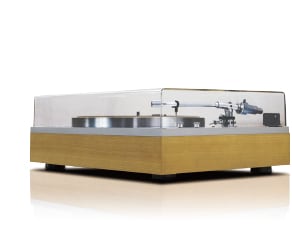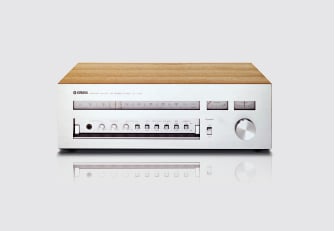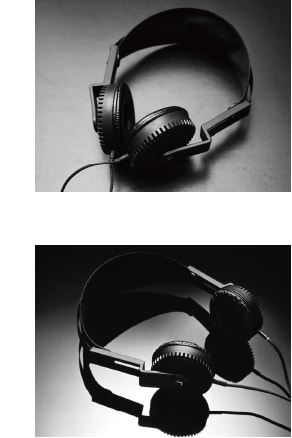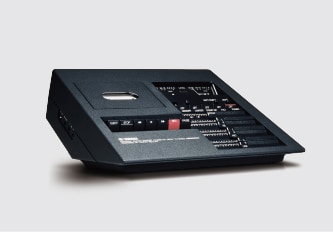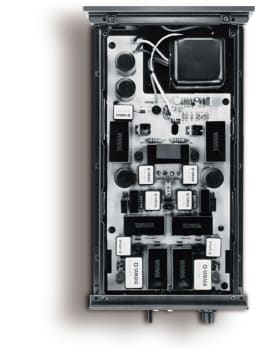The JA-0506 was Yamaha's first full-fledged single tweeter developed with the assumption to work in tandem with the original NS speaker featuring a Styrofoam diaphragm. The horn and equalizer sections were each precision machined from rounded ingots of solid aluminum, ensuring wide directional characteristics and flat frequency response, and with a powerful magnetic circuit featuring a large 40mm diameter magnet it achieved high efficiency of more than 115dB/Wm. Its lightweight, high rigidity hard duralumin diaphragm produced bright, superior sound quality that earned praise as soon as it was released.
With a terminal section directly connected by a banana plug, an adjustable length power plug attachment and a wooden base, it was extremely easy to use as a single unit, seeing duty in both tuning up existing luxury speakers and with high-end amateurs building their own systems in combination with companion NS speakers or third-party woofer units. Even further winning the hearts of audio enthusiasts, the catalog of the time touted its highly textured appearance by saying, "The same ultra-precision machining used to produce musical instruments and engines has been fully turned up."
In addition to the JA-0506 (pictured in photo) making use of a machined aluminum horn, this series also included the JA-0506B, a low-end model with an altered resin-molded horn and omitting the exterior finish and the actual measurement data (priced at 8,000 yen/unit in comparison to the JA-0506's 15,000 yen/unit) that was installed in some NS systems including later NS-30 units and the NS-570.





